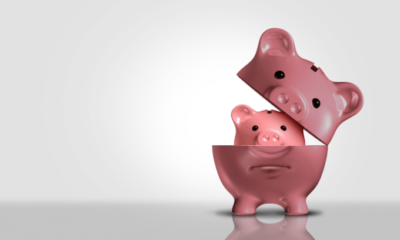What is shrinkflation?
Most of us know about inflation but have you heard of shrinkflation? We explain what it is, why it’s happening and offer tips to help you avoid it.

Most of us know about inflation but have you heard of shrinkflation? We explain what it is, why it’s happening and offer tips to help you avoid it.
The cost-of-living crunch has hit many Aussies hard over the past few years. From groceries and petrol to insurance premiums and housing costs, everything is just that little bit more expensive. But it’s not just inflation hitting our hip pockets – we also have to contend with “shrinkflation” on a range of products.
What is shrinkflation?
Shrinkflation is a form of hidden inflation that occurs when products have gone down in size but not in price. In some cases, the price has increased even though the size has been reduced.
It might be a less obvious approach than hiking up prices but more Aussies are starting to notice. Consumer group Choice says it has been hearing from countless shoppers over the past two years calling out times they’ve seen their favourite products getting scrimped on.
It was also a topic addressed in the Senate Select Committee on Supermarket Prices earlier this year. The final report said the key issue with shrinkflation is that it is done covertly, and in a way that is not obvious to the consumer, who the producer is passing the cost on to.
Why is shrinkflation happening?
Shrinkflation isn’t new or unique to Australia. It has been happening for years all around the globe. The word “shrinkflation” entered the lexicon in 2009 and “since then, manufacturers have “shrunk” everything from jars of Vegemite, Maltesers, Tim Tams, Freddo Frogs and Corn Flakes”, according to an article in The Conversation published in 2022. “In the United Kingdom, the Office for National Statistics counted 2,529 examples between 2012 and 2017.”
US consumer advocate, Edgar Dworsky, who is considered an expert on the topic, recently told the Calgary Herald that shrinkflation tends to be cyclical. “In times of high inflation we see more instances of it because manufacturers themselves are facing higher costs and they have to decide how to pass those costs on to shoppers,” he explained.
“They can choose to raise prices, reformulate the product with cheaper ingredients, shrink the product, or do nothing. Many choose the shrinkflation route because they know shoppers are price sensitive and are more likely to notice a price increase and less likely to notice a size change.”
What are some examples of shrinkflation in Australia?
Products with a long shelf life including breakfast cereals, chips, biscuits and chocolates are commonly hit by shrinkflation but nothing is safe – including cleaning products.
Earlier this year, Choice revealed some of the products that have gotten smaller and either remained at the same price or gotten more expensive. It described breakfast cereal as a “serial offender” offering several instances where the package size has shrunk in recent years.
This is supported by research from Deakin University which found that since 2019 seven cereal products had decreased in size, but increased in price. According to Deakin University, the average package size had decreased in size by 54 grams and the worst was Sultana Bran, which dropped by 150 grams over the five years.
Choice noted that two McVities-branded biscuits shrunk in recent years. The McVities Go Ahead forest fruit-flavoured biscuits, for example, went from 218 grams in June 2022 to 174 grams today but the price stayed steady at $4.40. This effectively means you’re paying 25% more per 100 grams. You can find more examples in the table below.
Popular grocery items hit by shrinkflation
←Scroll to view →
| Product | Old size | Old price | New size | New price | Percentage increase in unit price |
|---|---|---|---|---|---|
| Coles Mighty Grain cereal | 560g | $4.50 | 495g | $4.50 | 13% |
| Coles Corn Flakes | 475g | $1.90 | 440g | $2.10 | 19% |
| Woolworths Max Charge cereal | 560g | $4.50 | 495g | $4.50 | 13% |
| Woolworths original salted corn chips | 200g | $2.30 | 175g | $2.30 | 14% |
| McVities Go Ahead forest fruit-flavoured biscuits | 218g | $4.40 | 174g | $4.40 | 25% |
| McVities digestive biscuits | 400g | $4.40 | 355g | $4.40 | 13% |
| Jif Power & Shine Bathroom cleaner | 700ml | $2.50 | 500ml | $4.00 | 124% |
Source: CHOICE
Is shrinkflation legal?
Shrinkflation is not only legal but companies don’t even have to let customers know if they reduce the size of a product. There are calls to change that. One of the recommendations in the Senate Select Committee inquiry into supermarket prices is that supermarkets notify customers of changes in sizes or prices of products, to help prevent shrinkflation.
“This is not a new idea and was recently done voluntarily in France by Carrefour who in 2023 sought to name and shame the big multinational food suppliers for giving their customers less for more,” noted the report. “While it began as a voluntary move by Carrefour, the Government of France has ordered that from 1 July 2024, retailers in France must notify shoppers of shrinkflation.” It’s too early to assess how effective this new law has been.
How to spot and avoid shrinkflation
Shrinkflation can be hard to spot. Something experts agree could be a sign that a product has shrunk in size but not in price is redesigned packaging or a new slogan like “new and improved”.
One of the best ways to make sure you’re getting the most bang for your buck at the supermarket is to use unit pricing. It helps you compare prices to find the best value for money when buying groceries. By using standard units of measurement you can easily compare the prices of products, regardless of their size, brand or the way they are packaged or sold.
You can find a product’s unit price on the shelf label if you’re shopping at the supermarket. And if you are doing a grocery shop online, be sure to change your filters so that products are sorted by lowest unit price.
-
For deposit amounts $0 - $250,000
-
For deposit amounts $0 - $250,000
-
For deposit amounts $0 - $250,000
Access money 24/7. No monthly fees. No min balance.
Optional Pay&Save feature. Activate boss mode.
-
For deposit amounts $0 - $100,000
Access money 24/7. No monthly fees. No min balance.
Optional Pay&Save. Savvy Saving Starts Here.
-
For deposit amounts $0 - $100,000
Cover image source: Lightspring/Shutterstock.com
This article was reviewed by our Editor-in-Chief Nina Rinella before it was updated, as part of our fact-checking process.











